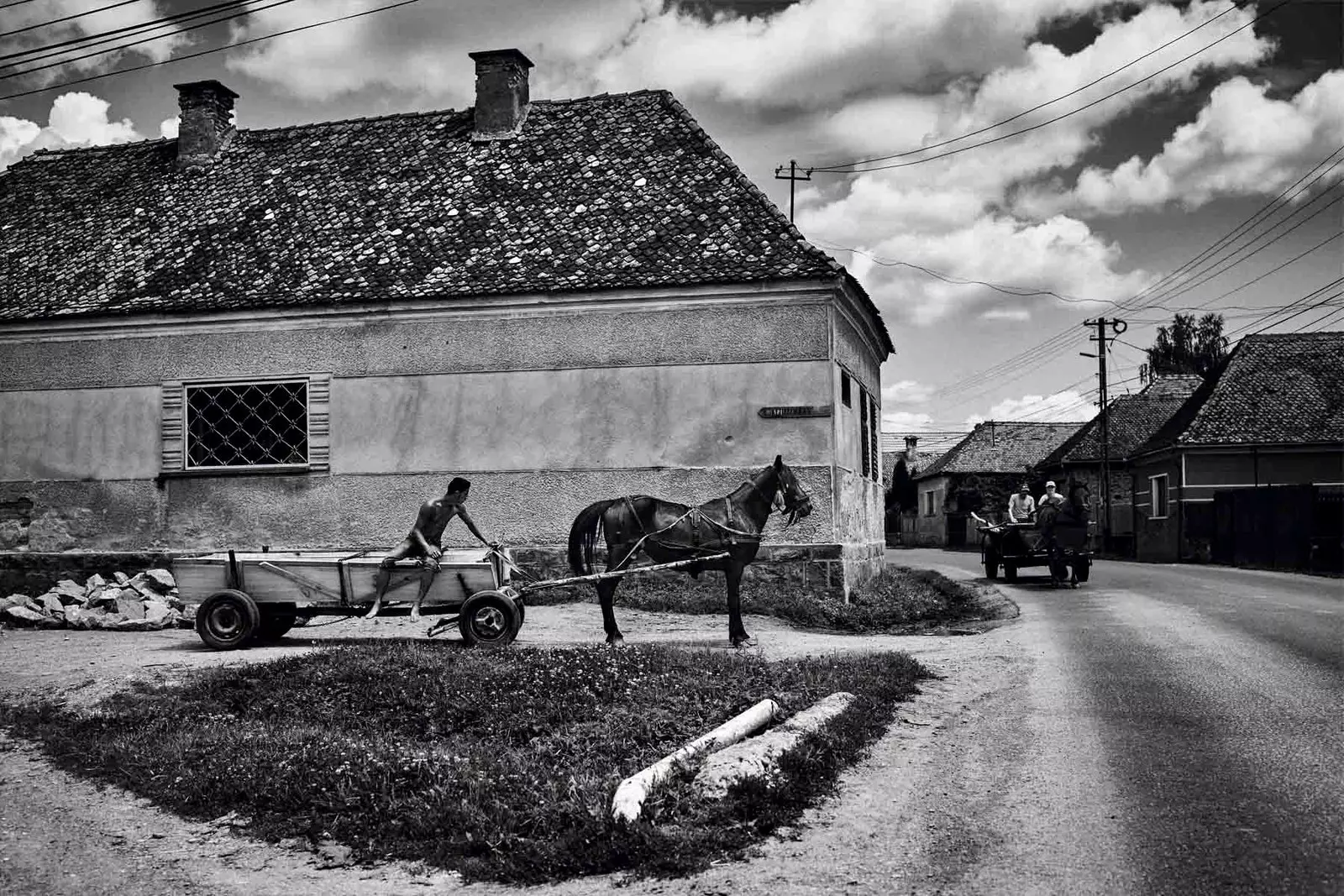
Oxcarts in Zálanpatak
It is a sunny day in August and I have just started my car tour through an area of **central Romania** extraordinarily picturesque, surrounded by the constant image of green hills dotted with gigantic bales of hay.
as i drive from one village to another making the occasional stop to take a look at the magnificent 13th century churches, the same ones that once functioned as citadels , the welcome I receive from the locals... it's not very warm let's say
Almost everyone I come across – Farmers weeding their fields by hand, kids playing on the side of the road, women hunched over in headscarves carrying bags of tomatoes– they shoot me a look serious and suspicious which seems to be the official look of Transylvania.
It is also true that every time I stop to talk to one of them the rigid facade it crumbles quickly.
In fact, a young boy dressed in a tracksuit offers to teach me how to climb a wall of stone to be able to see an abandoned medieval rectory. But in the next town the frowns resurface.
When it's time to eat, I finally decipher the mystery of suspicious looks: Car . This is one of the only regions in Europe where pre-industrial customs still endure, with farmers making use of horse and carts and that they cut hay with scythes, so my rented Ford is not making my access to the community easy.
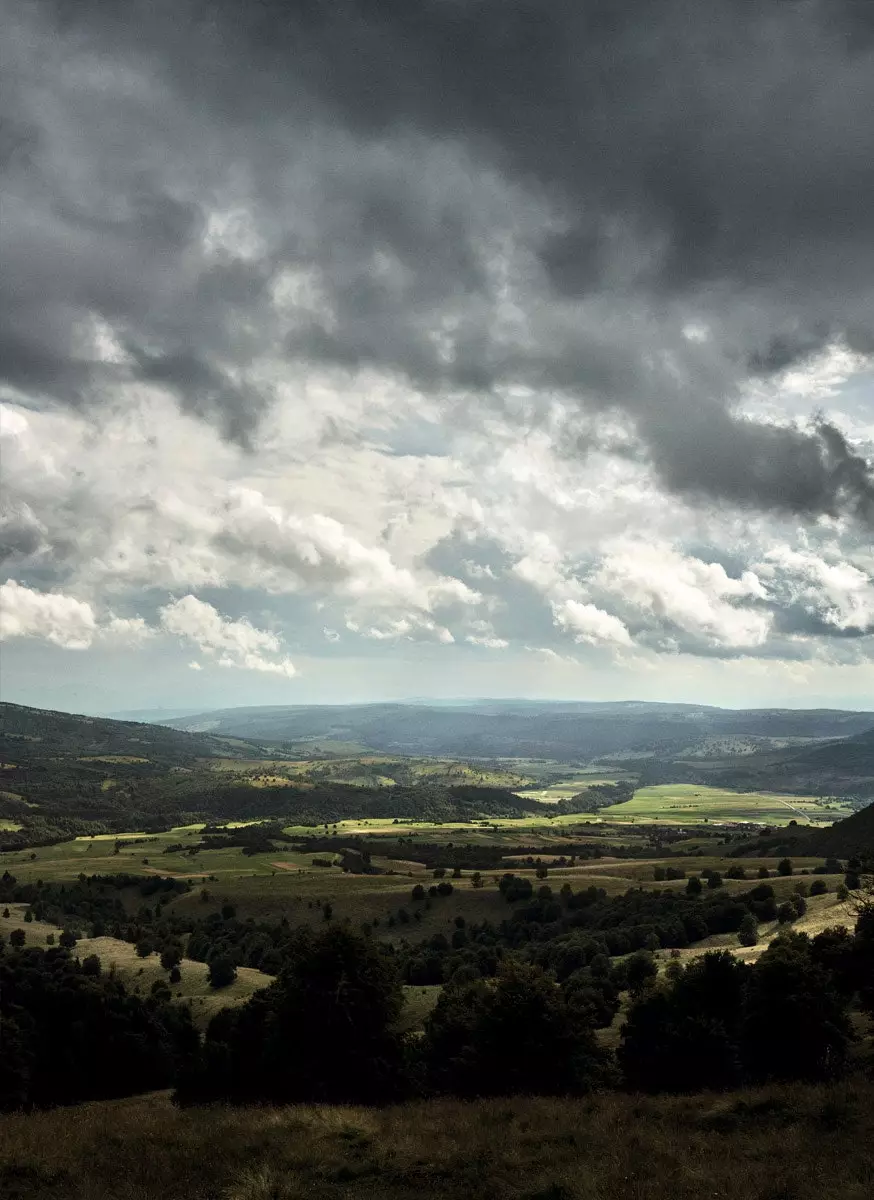
The countryside east of Miklósvár
One must also reckon with the fact that Transylvania , a region that is bordered on both sides by the carpathians, has been conquered over the centuries by almost all foreign leaders blinded by the imperialist vein. And let's be honest, if your hometown had been ruled by Huns, Mongols, Tatars, Turks, Habsburgs and Ottomans, among others, you would probably be prone to being suspicious of strangers.
Very soon, however, the many advantages of complicated story of Transylvania are revealed to me. After chasing some buffaloes to the courtyard of a small farm where a smiling old lady offers me a pair of Ducks as a gift, I understand why more and more travelers addicted to technology have fallen under the spell of this place.
Although historical ups and downs of Transylvania have left him a culture unfathomably rich and complex (as well as the fabulous architecture that accompanies her), in many villages daily life continues to be Very simple , staying in sync with the rhythm dictated by the nature.
Among his legion of admirers is a good number of wealthy people of european origin -including the very Prince carlos –, accustomed to spending weekends in their homes in the English or French countryside, well stocked with old world pastoralism but without the authenticity of the agricultural day to day.
“Transylvania is one of the few places where you can still see the lifestyle of hundreds of years ago , a moment in which nature and human beings were in much more harmony ”, says Jessica Douglas-Home, a Londoner whose foundation, **Mihai Eminescu Trust (MET)** , has led the movement to protect these villages from the abandonment and extreme modernization. Non-profit, the MET has a growing number of simple and comfortable accommodation for rent for a price of around 40 euros per day.
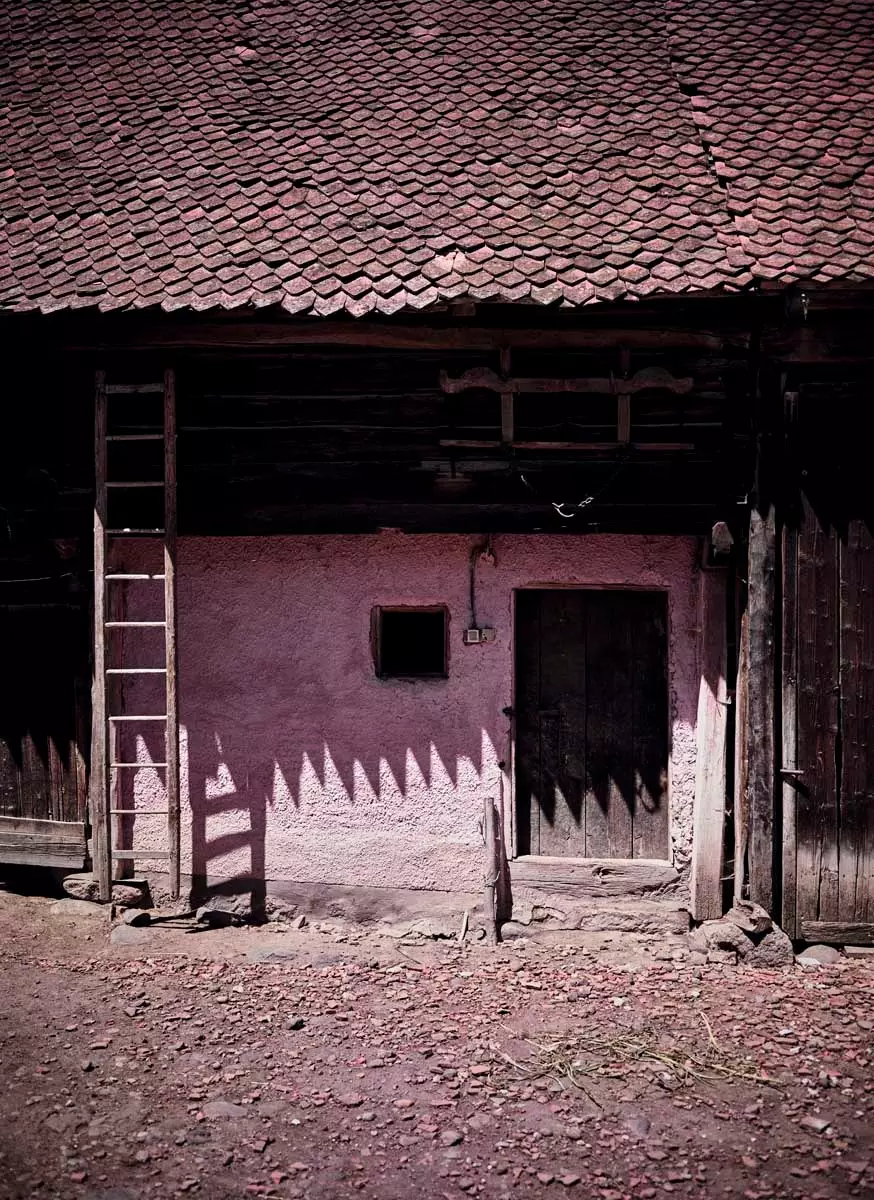
A house in Zalanpatak
I spend my first night in one of them, in a town called Malâncrav. An old farm now divided into two bedrooms, located directly opposite where it is located the hole from the city.
And no, it's not a decoration, it is the place where the locals go throughout the day to pump water to fill their cisterns. Andrea Ross, part of the MET and the one in charge of showing me the town, explains that the population of Malâncrav –approximately 1,000 people–, she has some 200 descendants of the so-called Saxons, who settled in this area from 1143.
At that moment Transylvania was part of Hungary and the king Geza II invited thousands of Germans (actually not from Saxony, but from Rhineland ) to colonize the area and protect it from turkish invaders.
Largely autonomous and without feudal lords to control them, the Saxons established their own legal system and built hundreds of extraordinary fortified churches , wonders of vernacular gothic architecture. More than 150 of them remain there today and several are cataloged by the Unesco.
With walls three and a half meters thick and designs similar to labyrinths which often included common living areas and underground pantries , the churches served as shelters during sieges. “The entire village could survive inside them for weeks,” says Rost.
Most of the Saxons left the area near 1990 , when Germany invited them to return after the fall of the Romanian dictator Nicolae Ceauşescu , but in the Malâncrav Lutheran Church masses are still held in the local Germanic dialect.
The central nave is covered by magnificent 14th century frescoes whose delicacy is even more surprising due to the robust battlements that surround them. In the sacristy there are some medieval graffiti carvings on the walls, including a note signed in 1405 by a priest named Niklaus, in which he states that he has to leave town without explaining why.
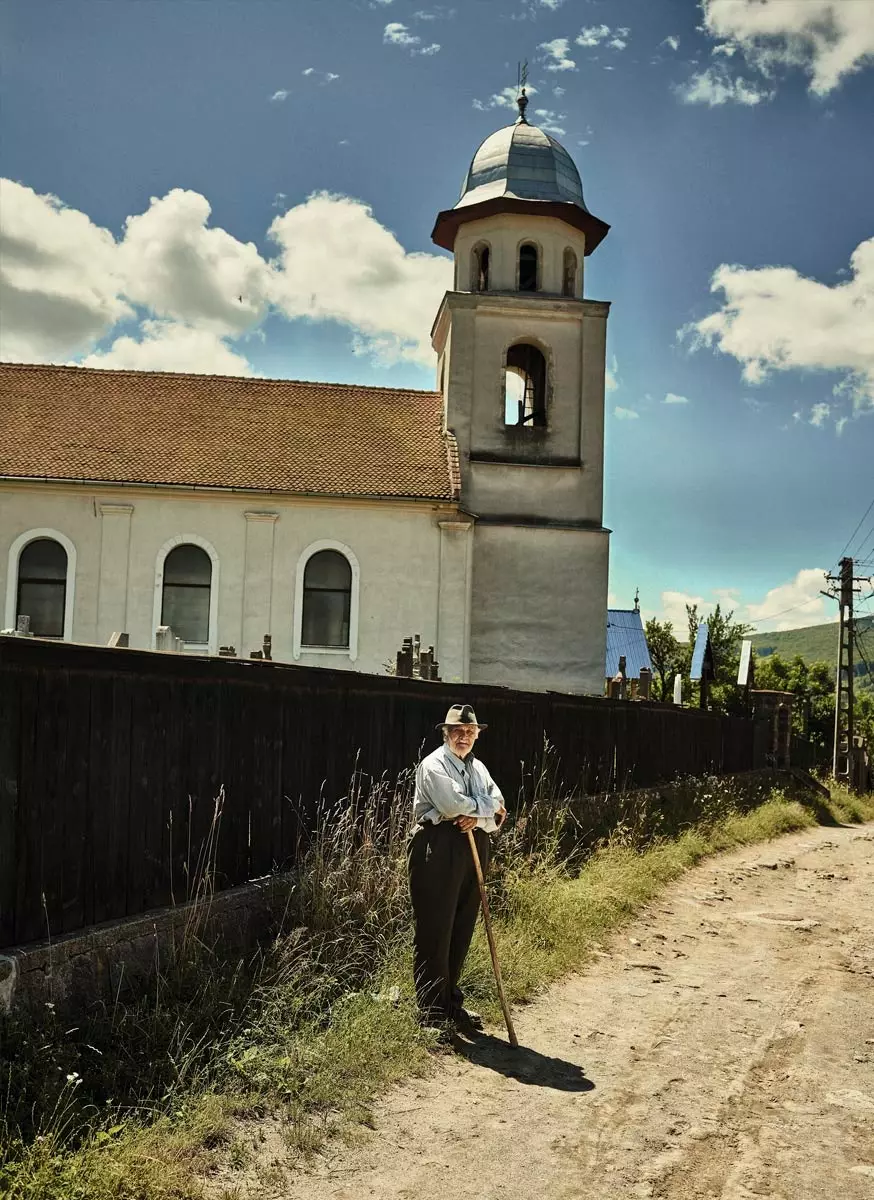
A church near Brasov
The most special moment of summer in Malâncrav is a kind of unofficial cow parade a little before sunset, at which time two shepherds They guide them back to the village after spending the afternoon in the grazing fields high in the mountains.
The main road is bordered on both sides by narrow houses like the one I stay in, with yards, stables and vegetable gardens in the back. Each animal recognizes the door of its home and breaks away from the herd when it passes in front of hers. Rost and I tracked down the buffalo to the property of Marioara and Ioan Baiaz , a 60-year-old couple who invites us to see how they milk it.
Halfway through the process, Ioan offers me a cup of hot buffalo milk fresh from the udder. I panic for a second but I down it in one gulp with all its creamy sweetness. It is then that Marioara's mother, sitting in the garden plucking sage leaves Straight from the stalk, she insists I take to two of the ducks of the family back with me to California.
She tells her that she most likely won't be able to take them on the plane and she tells me: “Don't worry, I'm sure they will. you will convince the pilot ”.
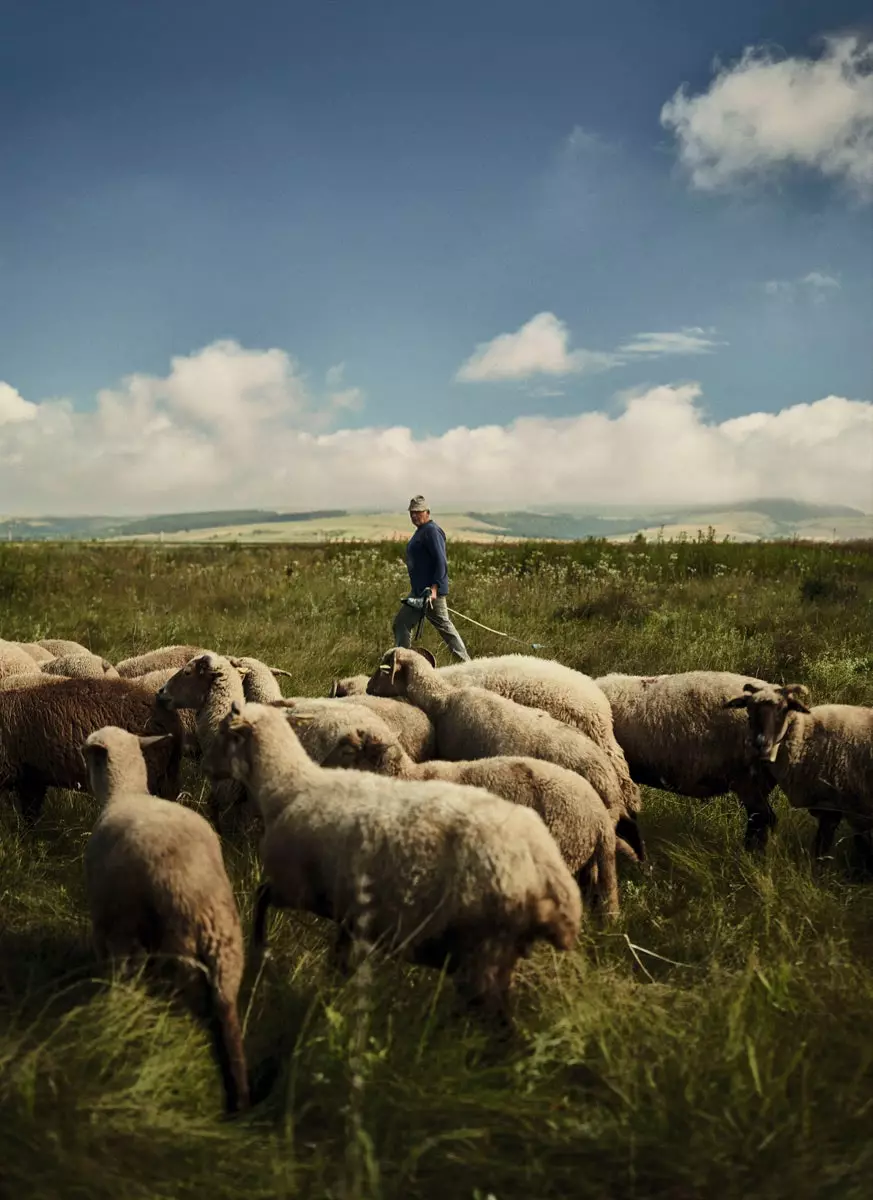
A shepherd with his flock on the outskirts of Brasov
Back at the guest house, dinner awaits me: Nicoleta Jeler, the villager who runs the house for the MET, has prepared a chicken dumpling soup along with some rolls sarmale , cabbage leaves stuffed with beef and pork. rich and satisfying , just as she has to know the food that she is enjoying a few meters from the place where it was grown . Sarmale and other local dishes are simple and hearty and, in many cases, organic by default
All this bucolic charm inevitably comes packaged with some less magical realities . Transylvanian farmers use horse carts and plows not because they are picturesque , but because they are less expensive than tractors.
Romania, after joining the European Union just 11 years ago, it is still one of the poorest nations and one of the most corrupt : Money allocated for a new school could end up, one way or another, funding a villa for the mayor's cousin and creating a series of thorny challenges for conservation groups like the MET.
Another problem is the wave of new rich who have found work in Western Europe and who decide to return to buy or build vacation homes in rural areas. Since many locals still associate rustic aesthetics with rural poverty, their architectural preferences often lean toward the new and the shiny. Strict building codes have been implemented in historic areas to prevent this, but enforcement is very permissive.
Sometimes, "the MET has only a few hours to intervene before a new owner pulls out a dozen antique hand carved picture frames to replace them with cheap plastic ones,” explains Douglas-Home.
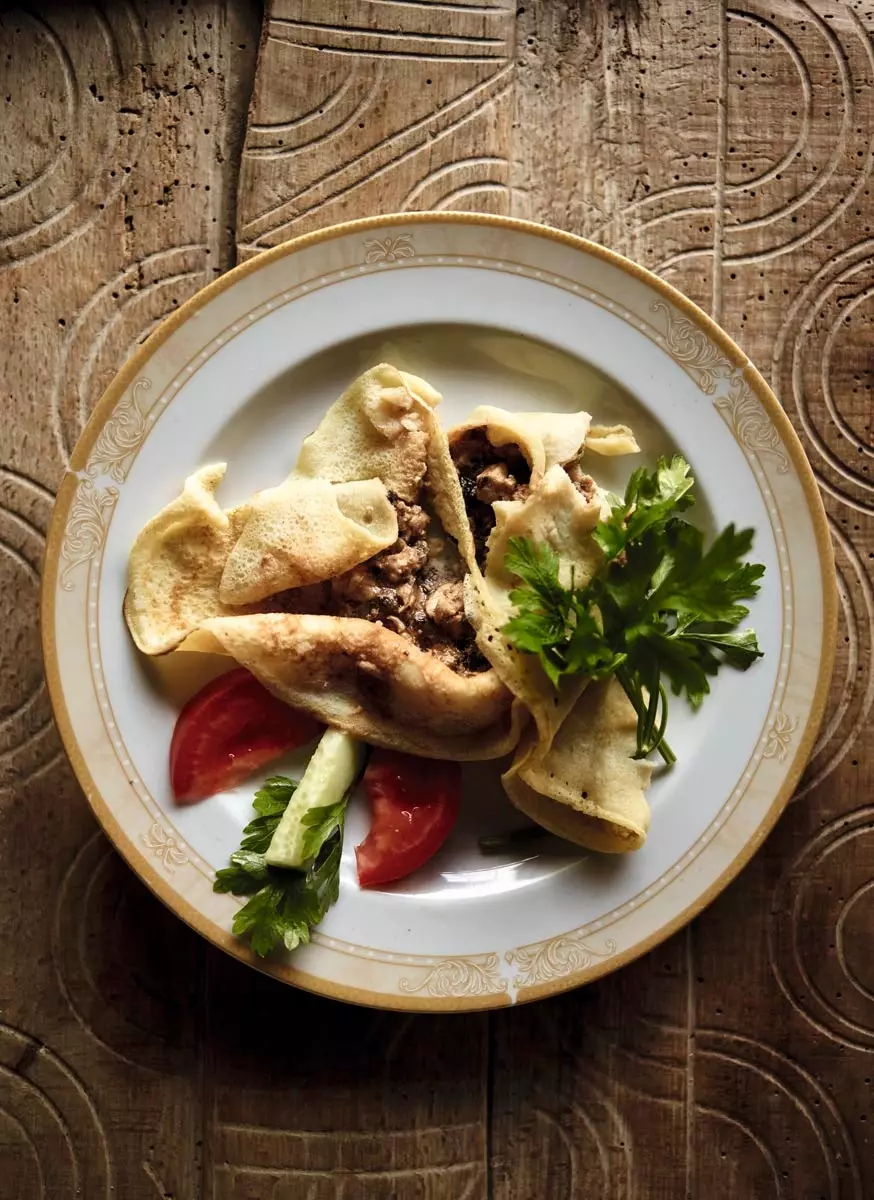
Traditional meatloaf from Zalánpatak
“We try to intervene before the damage it's done,” he says. “We want people to understand that if we dream of having a nice village, that attracts tourism and in which you can live, it is a terrible mistake to alter the beauty of these houses with the use of glass and steel finishes ”.
The MET also helped quash a proposal to build **a Dracula theme park**: a project by the Romanian Ministry of Tourism, hungry for traveler money. Among the plans was the construction of a zip line of great height that ended in a old cemetery. (Just to be clear, Bram Stoker's Count Dracula was inspired, in part, by Vlad the Impaler, the prince born in Transylvania.
But his story is pure fiction and the legacy of the character is evident, for the most part, in souvenir shops). Douglas-Home, aware of how difficult it can be for a foreigner to orchestrate the efforts of preservation from afar, he has a team made up mainly of Romanians and led by the director of the trust, Caroline Fernold , which plans to give the MET to a local team.
For visitors, both the pros and cons of "eco-friendly" conservation smart tourism are on view in the pleasant Viscri village (population: 467), an hour's drive east of Malâncrav.
After the Saxon exodus in the early 1990s, Viscri remained almost completely empty until their pastel colored houses with gables began to attract Roma families, Romanians and, more recently, a handful of investors from Western Europe.
The restoration of the buildings by the MET and the initiatives in favor of the poorest residents –workshops on traditional agricultural methods, weaving classes , embroidery and jam making– brought Viscri back to life, making it look like a Corot painting in three dimensions, with their flocks of sheep mowing the lawn and wandering between patches of grass.
But this tiny town now has more than two dozen restored guesthouses , many of them on Airbnb, and in the height of summer visitors often flock to the dilapidated wooden attics of the 13th-century church
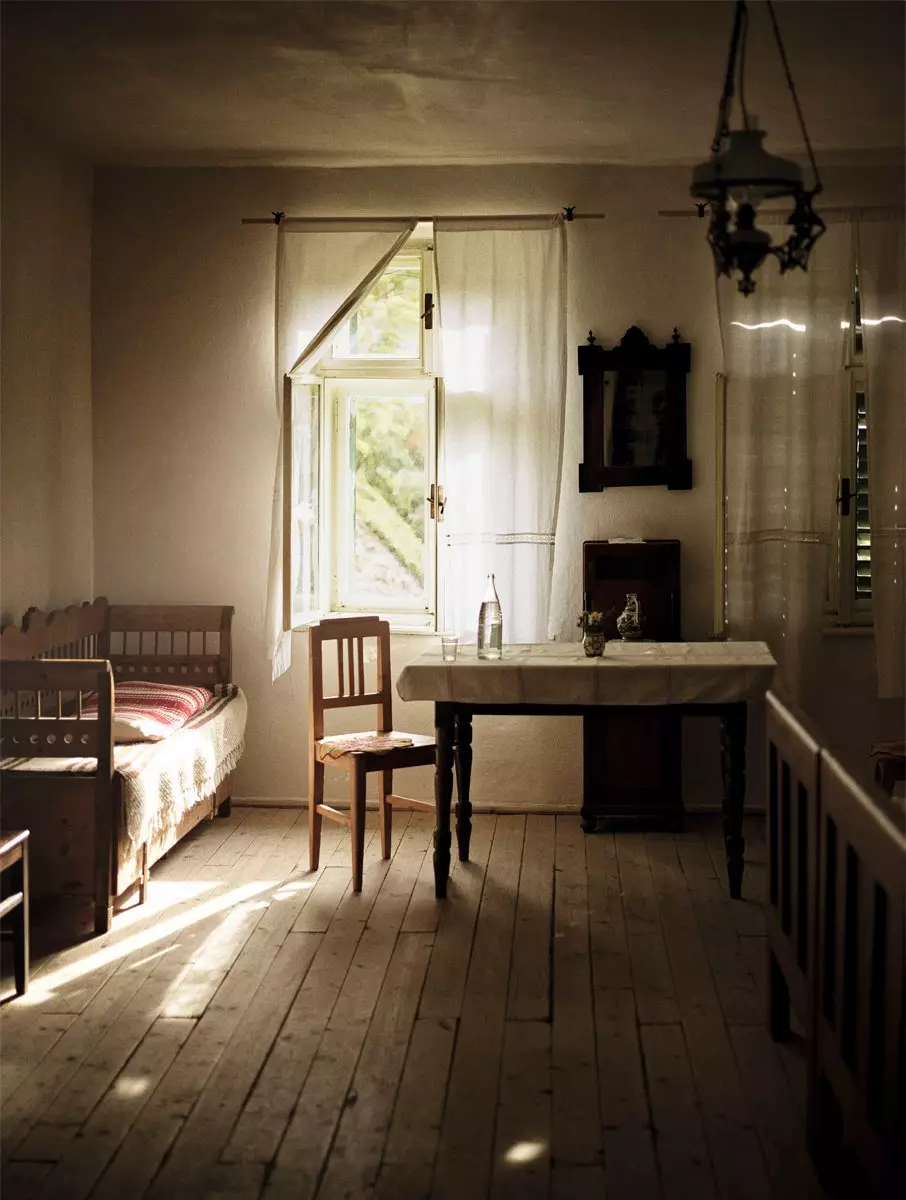
One of the guest houses in Malâncrav managed by the Mihai Eminescu Trust
The environment seems less studied and self-conscious in richis , where Rost introduces me to a wisecracking 85-year-old man named Hans Schas.
After talking under the peach tree in his garden, chewing honeycombs from one of his hives, Hans invites me to his kitchen and, together with his wife Hanni, it serves shots of brandy made with the abundant fruit that the tree bears. It turns out that Hans and Hanni form the single saxon couple that remains in the city, which is still called by its name in German, Reichsdorf.
When I ask them about how things have changed since the 1990s 1930, Hans laughs and gives us a spiel about the wooden benches that is in front of each house. "In the old days it would have been shameful have a bank because everyone was always working,” he says. "Now everyone has one and spends all day sitting in them".
But the slowness in Richis is irresistibly seductive for the few visitors who arrive here. Right in town is the last guest house of the MET, newly renovated with the help of the famous British decorator (and friend of Prince Charles) David Mlinaric.
He was also in charge of overseeing the interior redesign of the Apafi Manor from the MET, the 18th-century house owned by a nobleman in Malâncrav. “For me it is incredible that Transylvania still has so many extraordinary houses, churches and buildings and that the rest of Western Europe doesn't even know about it,” says Mlinaric.
I drive east from Richis and Viscri, and observe subtle changes in the landscape: the forests become more dense , the roads are narrower and men are more likely to carry felt hats narrow brim.
I am in the country Szekely, populated by hungarian ethnicities who, like the Saxons, ruled themselves for centuries while the area was claimed by various foreign empires; most still speak Hungarian and retains strong cultural ties with Hungary – Romania annexed Székely in 1920 , when the Treaty of Trianon entered into force.
Here are also some rural accommodation, particularly those led by the Earl Tibor Kalnoky , a tall and friendly man of 51 years, belonging to a clan of hungarian nobles who was in exile during the communist years.
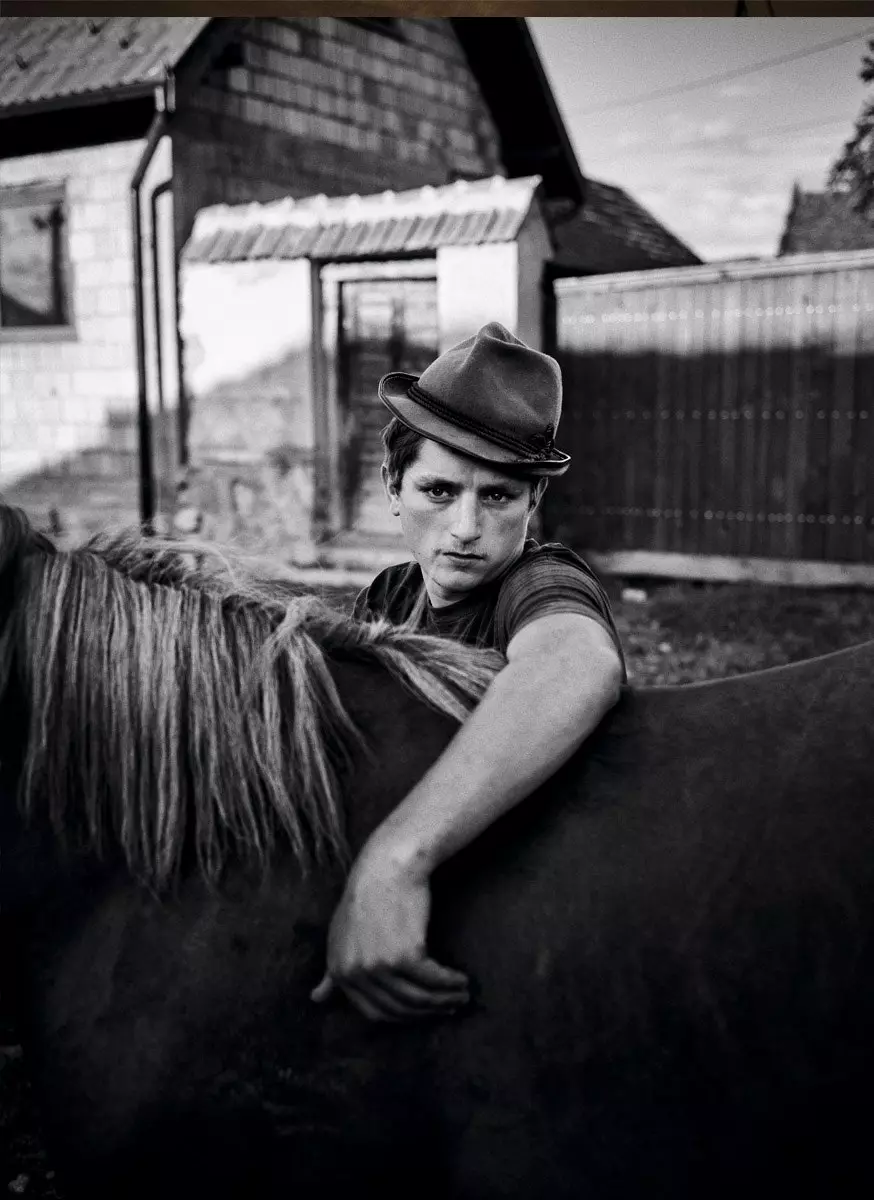
A horseman in the streets of Malâncrav
While we drink some beers in the town of Miklósvár (Micloşoara, in Romanian), Kálnoky tells me that the 16th century hunting ground of his family, along with various outbuildings and cabins, was seized by the state in the decade of 1950 . Kalnoky grew up in France and Germany, but in the late 1990s he moved to Bucharest, he learned Romanian, recovered some of the dilapidated properties and began to transform them into accommodations.
Determined to use only traditional construction methods, got off to a bad start with a local contractor who liked to work with cement. “What I did was ask the workers, "How did you build your grandparents the walls of their houses when there was no cement available?
The answer was a local lime mortar, sand and water which became his main material. Meanwhile, Kálnoky hired artisans to restore the furniture and toured the region in search of other family pieces , which he bought from the locals.
With a mix of vintage clocks, good bedding and hand-painted walk-in closets, the rooms are more refined than the ones he had in Malâncrav, although Kálnoky likes to emphasize that everything must go unnoticed and no bragging. And no Wi-Fi.
Some guests from Eastern Europe complained about his absence and that of the televisions. "They told me: 'But the Prince carlos Didn’t he stay here?’ – Kálnoky recounts – to which I replied: ‘Yes, and it is precisely those things that try to avoid ”.
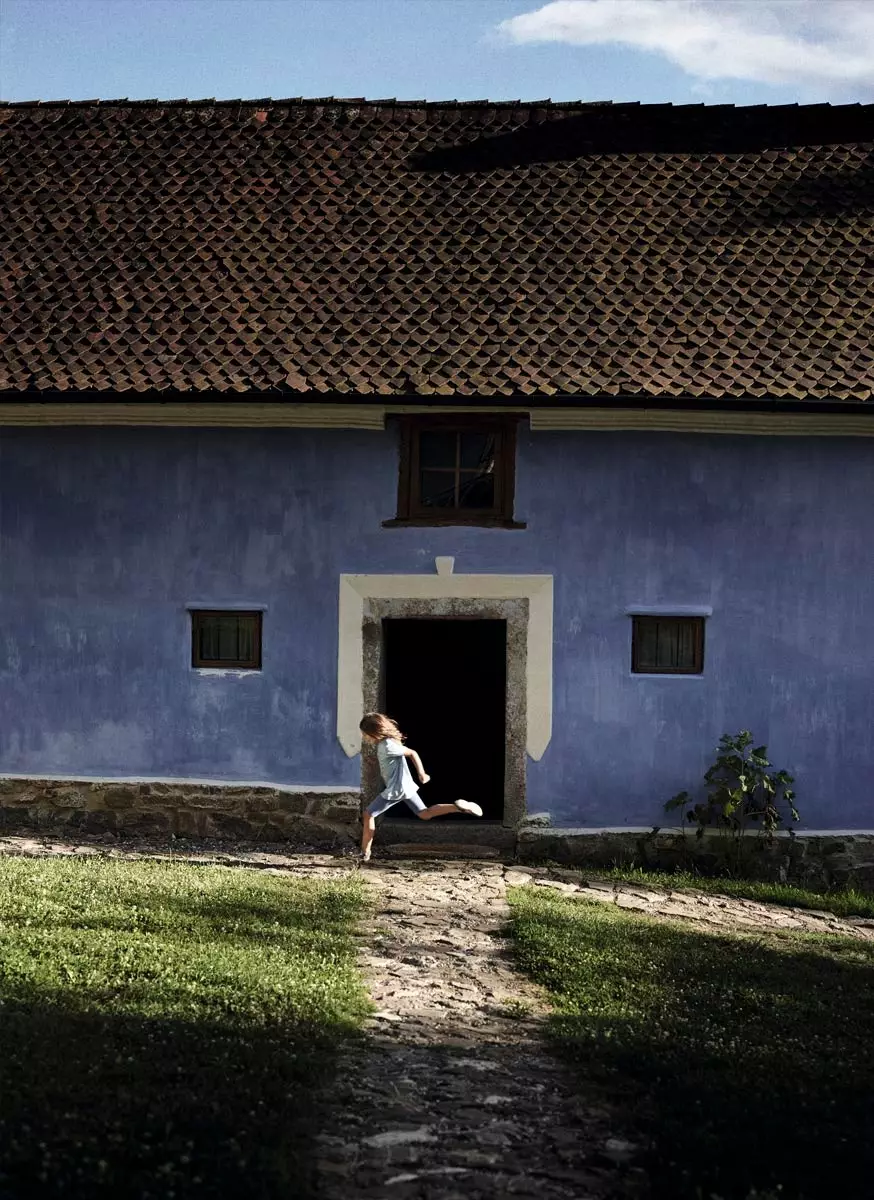
A boy runs through Zalanpatak
the prince of wales was one of the earliest supporters of the work of the MET and has been an ardent in love with transylvania for decades, financing several local projects related to his interests with respect to sustainability, biodiversity and conservationist architecture.
It was during a visit to Miklósvár in 2007 that he joined Kálnoky (they are distant cousins ) on a 20-kilometre hike to a mountain ridge overlooking the village of Zalanpatak (Valea Zalanului), place where one of Kálnoky's ancestors, a judge, had built a small complex.
As they looked down on the roofs of the cabins in a valley of hills and bubbling streams, Carlos told Kálnoky, “This is what I always imagined when I thought of Romania ”. Except for the stables where "there were a lonely cow, standing on a pile of manure, all the buildings had collapsed,” says Kálnoky.
Today the ostrich feather crest of the Prince of Wales adorns the upper part of the facade of the renovated stables along with the seal of the Kálnoky family. Carlos bought the property and reformed it together with Kálnoky, that he receives travelers throughout the year in his five rooms , except when the prince is in residence (Carlos returns each spring, without Camilla, to spend a week walking, reading and watching bears ) .
Kálnoky also relates that the prince closely watched the choice of the decorative elements: several photos were sent and received from antique ottoman rugs by email to London and paid special attention to your his bedroom, from whose walls hang engravings of his property.
Although Kálnoky downplays his family union with Prince Charles, which dates back to the hungarian ancestors of Queen Mary ("You're probably related to him too if you look back far enough," jokes Kálnoky), he's not shy about using this resource with business purposes . If you want to book the prince's room just go to Zalanpatak's website and click on The prince's room.
Even Carlos himself has not hesitated to use his status as celebrities to encourage smart and eco-friendly tourism in Transylvania, so it's clear why he allows strangers to sleep in his bed.
Of course, some guests can't help it browse the shelves of the drawing room and wondering which of the personal effects – the book birds of the world , the CD Love You Live of the Rolling Stones…– they could have come here from the palace of Buckingham.
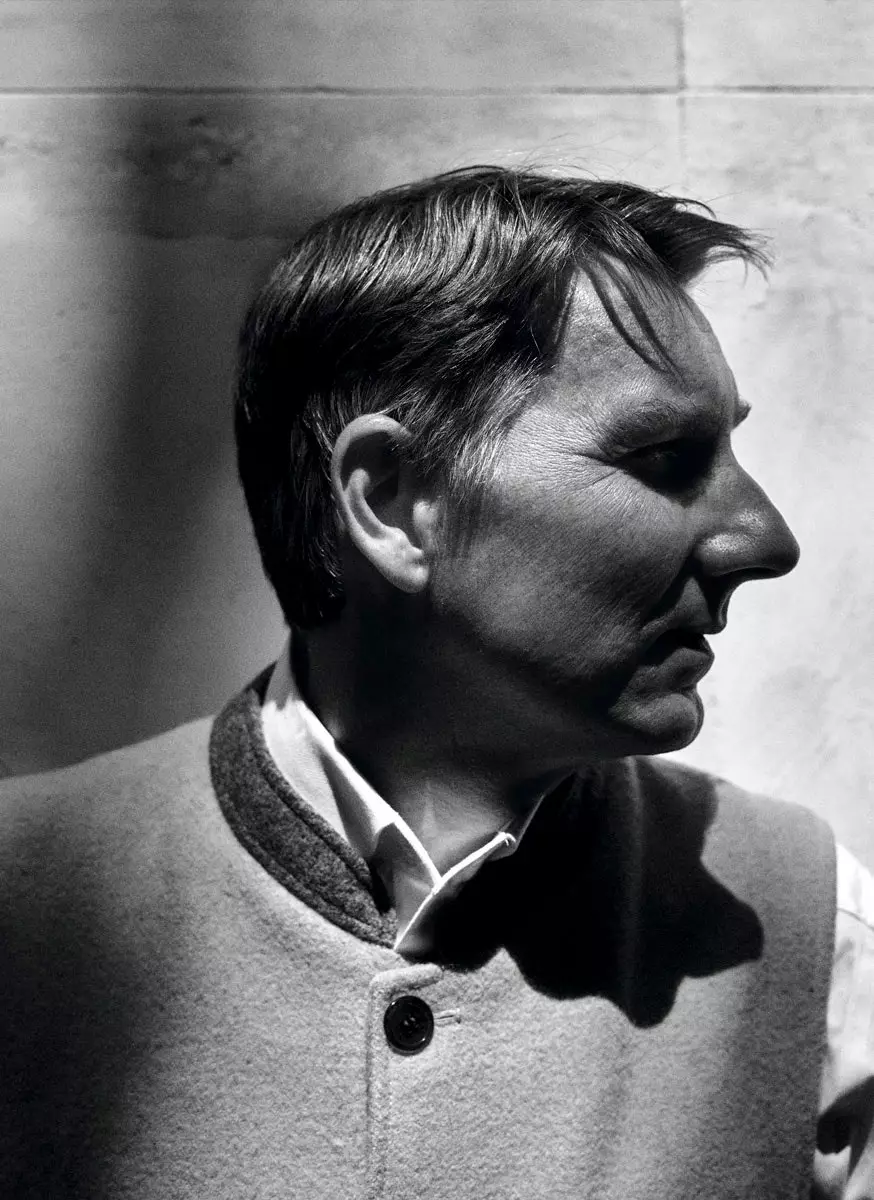
Count Tibor Kalkon
In both Miklósvár and Zalánpatak, guests eat in a communal table and judging by my dinner at both places, the mix of diners is more intriguing than you would normally find in a bed & breakfast in the Catskills. The Miklósvár group includes a fresco painter of the Bucharest church and former ambassador of Germany in Belarus; in Zalanpatak, there is a book publisher Londoner and his family, four Brits who love to travel who are madly in love from Transylvania. During breakfast, the father tells me: “I keep waiting for Tess to come down from the d'Urberville down the hill, carrying a bucket of milk”, before showing me on his iPhone the photos of the picnic the day before in the meadow. The photos remind me of ones I saw more than a decade ago when I met a French couple who He was returning from his first trip to Romania and he implored me to go to rural Transylvania as soon as possible. All these years later, the place still not a mainstream destination , in part because its infrastructure remains limited. But at a time when even tech moguls are warning of the consequences of spending too much time in front of a screen and in which everyone from chicken farmers to garbage recyclers is **increasingly attracted to rural life,** the old-world simplicity of Transylvania is more seductive never.
Later that same morning, the last of my trip to Transylvania, I take a walk through the only real street from Zalánpatak, which has a few dozen houses. Despite not having been more than 24 hours in the town, I'm starting to feel possessive when i stop to pick one up wild mint branch. Suddenly, I see something unexpected: A car.
A gray Toyota with Bucharest plates that goes pretty fast. Finally, I understand how the locals feel. Who is this stranger who comes to my beloved village?
It's my time to stop in my tracks and throw a look of fury the intruder. Evidently the driver is not intimidated and he offers me a polite smile. I can't help it: I smile and wave.
***** _This report was published in **number 120 of Condé Nast Traveler Magazine (September)**. Subscribe to the printed edition (11 printed issues and a digital version for €24.75, by calling 902 53 55 57 or from our website) and enjoy free access to the digital version of Condé Nast Traveler for iPad. The May issue of Condé Nast Traveler is available in its digital version to enjoy on your preferred device _
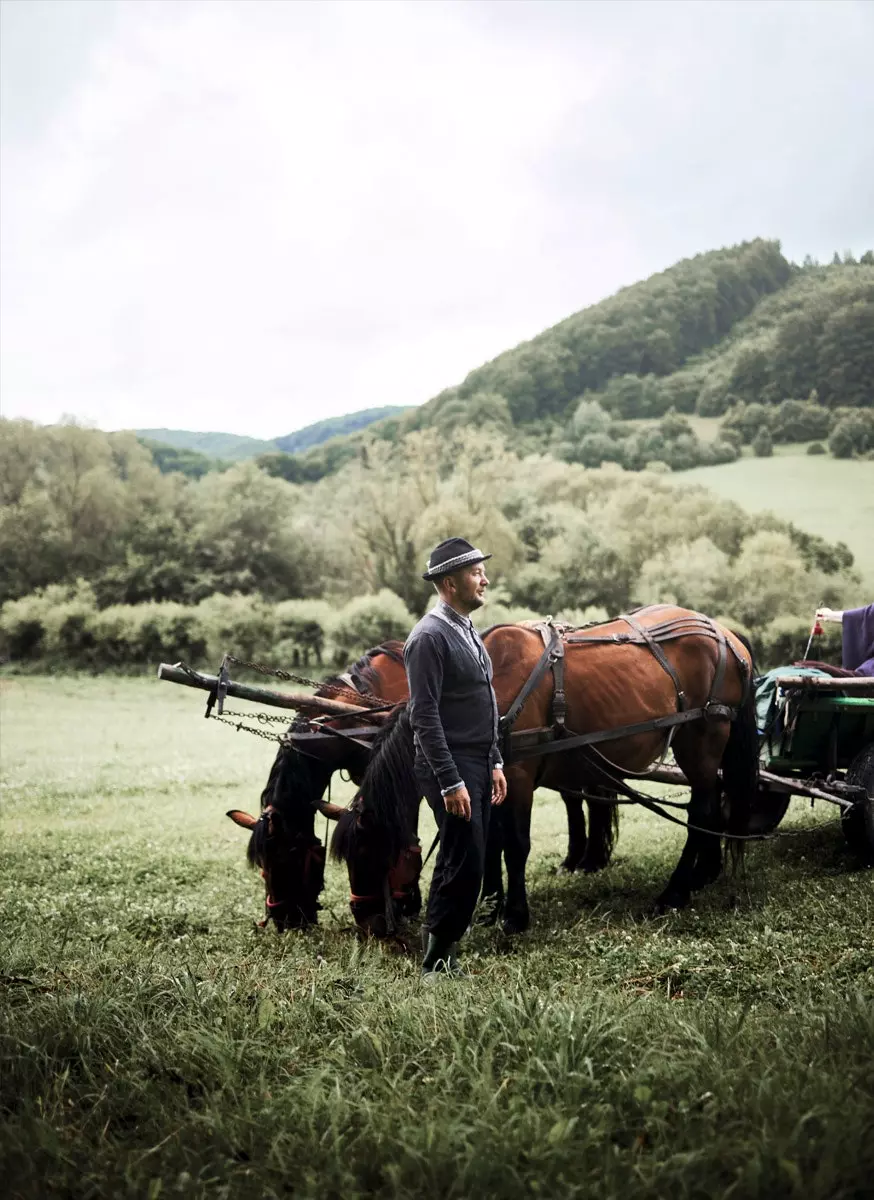
Prince Charles's accommodation offers tours in a horse-drawn carriage
